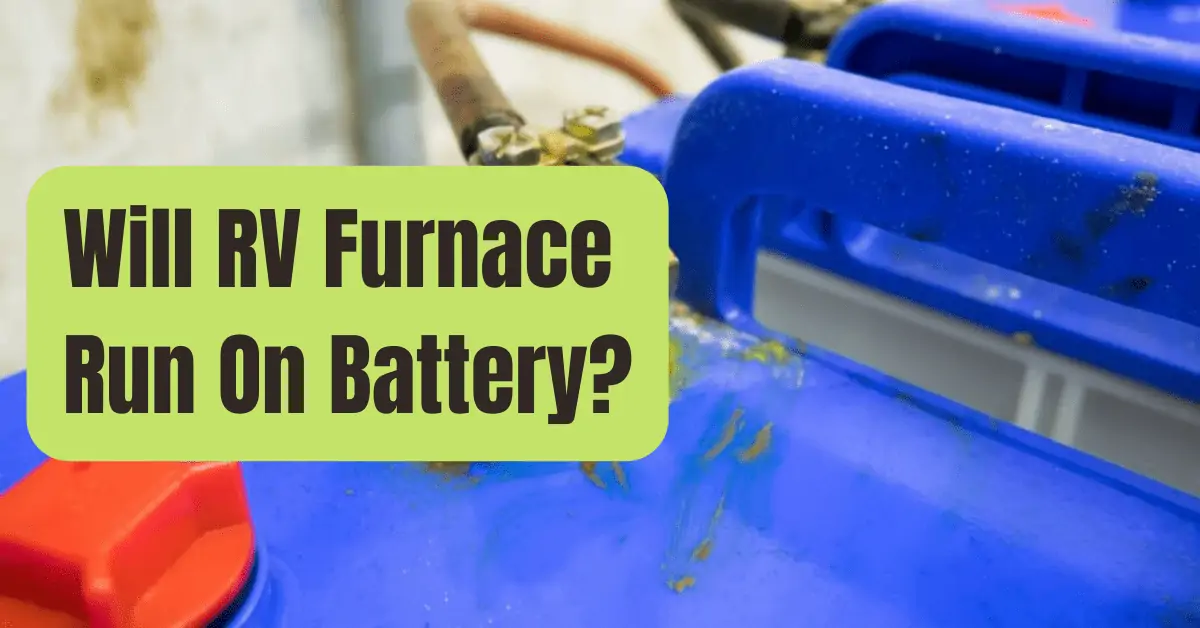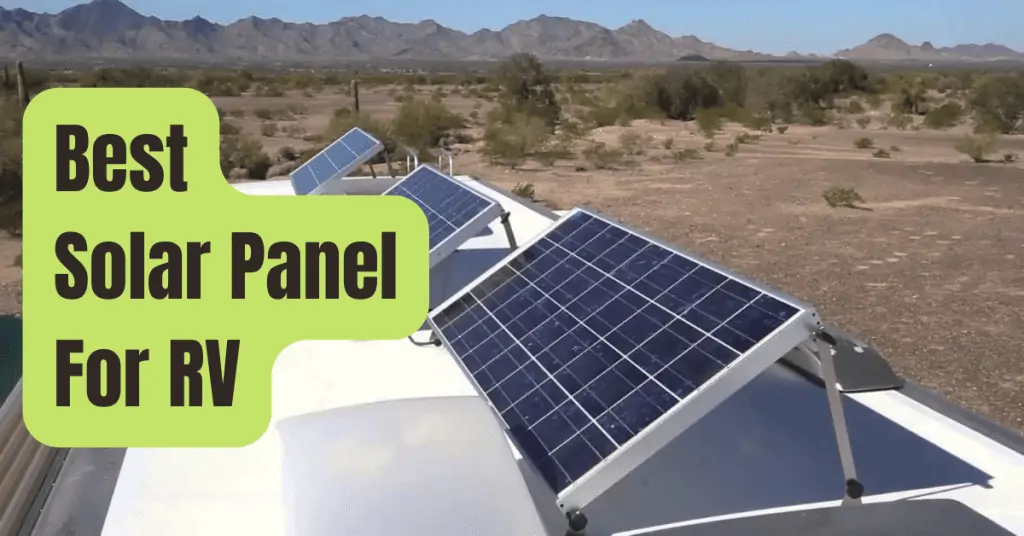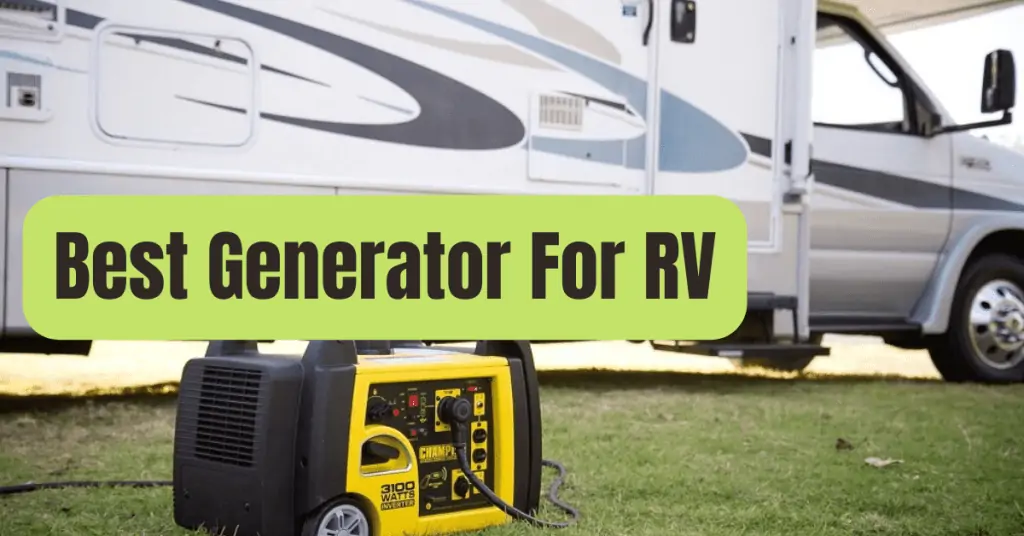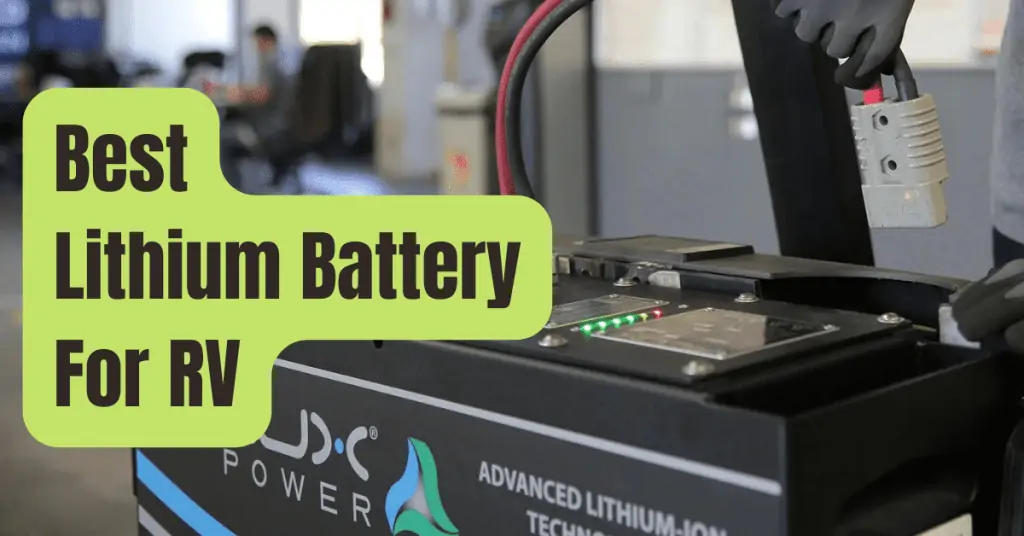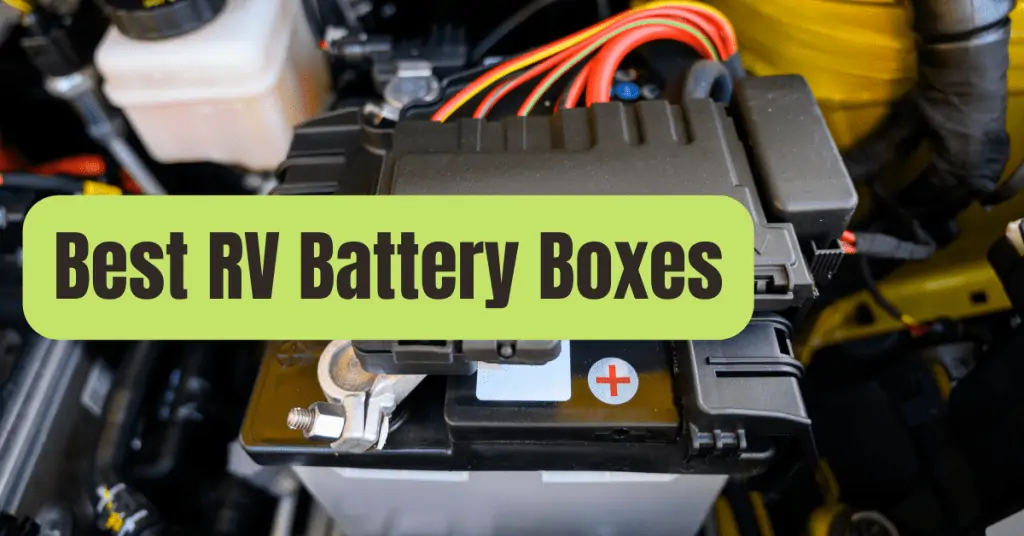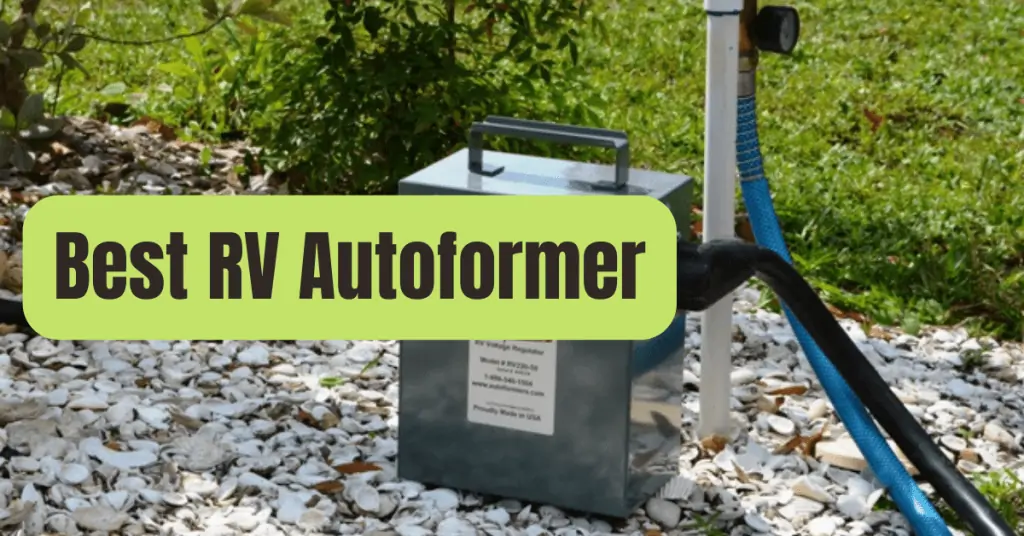We stay in our travel trailer numerous nights a year without a connection to shore power.
In fact, this is one of our preferred camping methods.
This forces us to depend on our readiness and the equipment in the travel trailer that can be operated off the grid rather than always being plugged in and experiencing all the comforts of home.
RVers refer to this as boondocking, and we are great fans.
Our longest camping adventure lasted nine days.
However, since the nights were so cold and we were traveling with a 1-year-old child, we had a generator to keep the batteries charged.
Without having to worry, we were able to keep warm and take pleasure in Glacier’s early spring weather.
Will a heater in an RV work on batteries? The furnace will really be powered by batteries.
Propane is actually used to provide the heat, but a battery powers the blower fan.
An average furnace will use 8 amps of electricity.
When not linked to shore power, it is a good idea to have solar or generator power to help with battery charging.
Many of the devices in your camper, RV, or travel trailer are powered by the 12 volt battery system.
It is simpler to describe what it does not run; normally, your trailer’s 12 volt system will not power your air conditioner, television, or any other 120 volt plug-in appliances.
You can heat your RV while off the grid by using the 12 volt system to drive the fan on your furnace.
The heater is powered from propane gas, and a 12 volt fan circulates hot air throughout your RV.
How Long Can A Heater Be Powered By A 12 Volt Battery?
If you have enough battery power, the furnace in your camper will operate without an electric connection.
Let’s take an example where you have two 12 volt, 100 amp hour batteries that can provide 200 amp hours.
Lead acid batteries have an useable capacity of 100 amp hours, and you generally shouldn’t draw down more than 50% of their capacity.
A blower fan typically consumes 8 amp hours.
Your heater should run constantly for around 12.5 hours if there is no other drain on your batteries.
Although it may seem like a modest amount, your heater never runs continuously.
Considering that it only operates for 20 minutes every hour to maintain the temperature in your coach, the whole time it is in standby mode is 37.88 hours.
This figure may not be realistic given that you might lower your thermostat at night or turn off your heat when you leave your trailer or go for a stroll.
Let’s consider a third case in which you only use the heater for eight hours at night.
Your trailer would use 105.6 amp hours over the course of five days using the same criteria of 20 minutes each hour.
You can now see how much more time may be added to this.
Because there are so many factors to consider, such as external temperature, desired internal temperature, furnace motor amp draw, size of RV, insulation utilized in RV, solar heat gain, etc., it is practically difficult to predict how long your batteries will really last.
A good rule of thumb is to plan on another means to charge your batteries if you need to use heat, such as solar power or a generator, if you are going camping for more than three days and have two healthy 12 volt batteries.
You may permanently destroy your batteries by draining them below 50% of their capacity.
You may increase the amount of amp hours that are available in your battery by switching to two bigger, 6 volt batteries or larger 12 volt batteries.
How Can An RV Be Heated Without Propane?
Always carry an electric heater with you to replace or complement your furnace if you have access to shore power or a generator.
You may just need to operate a modest electric heater in your bedroom at night to keep that space warm rather than running the furnace completely and waste gas heating other places.
We plug the heater in when boondocking to provide heat without using propane when we need to charge our batteries.
This is preferable to utilizing propane since the generator does not charge the batteries as quickly as the furnace’s engine would.
Obviously, if we run the generator harder, we will consume more gasoline, but not much more.
In the autumn, winter, and spring, you may take use of natural light to help heat your RV and give free lighting by positioning it to receive direct sunshine.
In order to keep the heat out of your rig in the summer, you would want to do the reverse and avoid natural light.
10 Suggestions For Extending Battery Life When Operating A Furnace
When boondocking or not plugged into shore power, there are various strategies to extend the life of your heating system.
This includes simple actions like dialing down the heat and more costly actions like installing solar.
#1. Turn Down The Thermostat At Night.
Generally speaking, resting in a colder climate promotes a better night’s sleep.
When camping, you can also stay warm while sleeping using blankets or sleeping bags.
To preserve battery life, try lowering your thermostat at night to a level that you find comfortable.
#2. When Not In The Trailer, Turn Off The Heat.
Make careful to switch off your heating and other equipment before you go on your journey to avoid draining your batteries.
#3. Buy Batteries With Higher Amperages.
Cheap batteries that arrive with your RV or those you may purchase over the counter at a parts shop will typically last less than batteries with more amp hours.
Here is a comparison of our best high amp-hour batteries.
#4. Turn Your Thermostat Manually On When You Need Heat And Off When You Are Comfortable.
Although your body may feel warm, your thermostat may be telling you to turn on the heat.
We manually turn the heater on to warm up the RV and manually turn it off after it has warmed up when we truly want to preserve battery life by not using the heater.
This prevents the heater from cycling while we are still comfortable in our trailer so that we don’t keep heating while we are already comfortable for the time being.
#5. Make Sure Your Ductwork Is Correctly Connected.
We discovered one of our heating ducts wasn’t truly connected when winterizing our RV.
Here is a photo of it connected to the louvers after installation.
Even though we were receiving heat from the unit, heat was also being circulated first behind our cabinetry and water heater.
Follow our instructions if you wish to install an extra duct.
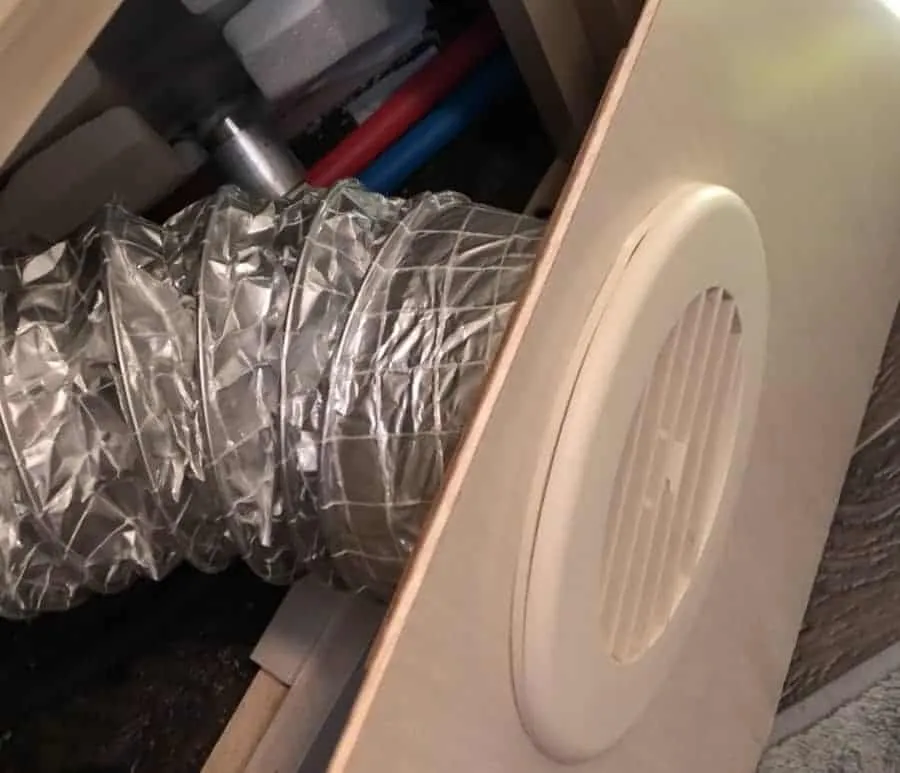
#6. Bundle Up
Always dress in layers so that you will be warm and be able to lower the thermostat to minimize the use of your heater.
#7. RV Position For The Most Amount Of Direct Sunlight
If you are positioned in direct sunlight, you may be astonished at how much heat you can generate even in the cold.
Our RV was unexpectedly warm when we recently visited it in storage in February, when the weather was about 45 degrees and it was sunny.
#8. Prepare Your RV For Insulation
Your RV may have locations where the manufacturer cut corners on insulation; we have discovered a couple of these areas in our trailer, including the floor of the slide-out and the region under the folding portion of our Murphy bed that slides into the passthrough storage.
To further insulate against the cold and keep our heat in, we bought some closed-cell foam insulation.
Insulating your vent covers will also help to retain a lot of heat.
#9. Install Solar To Maintain The Power Of Your Batteries.
You may use some rooftop or portable solar to keep your batteries charged.
Depending on the sun, recharging your batteries using 200 watts of solar power can begin at 2-3 amp hours in the morning and increase to 4-5 amp hours in the afternoon.
Depending on the circumstances, you could need 4 hours of sunshine to recharge your fan if it consumes 8 amp hours and is used for 2 hours every day.
This solar kit has been installed, and it works well! Read our article on how much you will need to learn more about solar.
#10. Bring A Generator To Charge Your Batteries
When we are boondocking, we use our generator to keep our batteries charged.
We often have to use the onboard charger for 1-2 hours every day to recharge our batteries.
We upgrade to solar power to get rid of the continual generator noise since we prefer to camp in busy parks and enjoy the peace and quiet of nature.
Everything we need, save the air conditioner, is powered by a 2,000 watt generator.
Find out more about the best generators we suggest.
More Strategies For Staying Warm In The Cold.
If you’re still seeking for methods to remain warm, check out our piece on the best wintertime RV and travel trailer heating techniques.
Are Rv Furnaces Electric Or Gas?
Gas is used in RV furnaces, and electricity is used to power the fan that circulates the heated air.
The only sources of electric heat in a camper would be a plug-in electric heater, a heat strip in your air conditioner, or a heat pump.
The ducted furnace in a modern RV will very certainly be powered by both electricity and propane gas.
A ducted furnace is comparable to your home’s air conditioning system.
The heat and air are managed using a control panel.
Air vents on the floor and/or ceiling allow air to circulate.
While the electricity turns on the furnace and moves the fan to circulate the heat, the propane warms the furnace.
This kind of furnace has a lot of advantages.
The basement area of the RV and the whole RV soon warm up.
This is advantageous since the furnace will stop the pipes and hookups for the water and sewage systems from freezing during cold nights.
Another advantage of this sort of heater is that it has an exterior vent to prevent moisture buildup within the cabin.
The fact that this furnace consumes a lot of propane is a drawback.
Despite being connected to power, the furnace will not operate if the propane supply runs out.
Tip: If you have two propane tanks, always use one of them instead of both.
As a result, you may turn the tank over on the regulator and have propane the next morning if you run out in the middle of the night.
If you draw from both tanks, you won’t have any reserve propane to keep you warm while you wait for a refill when you run out.
You most likely have a non-ducted furnace if your RV is older.
This furnace is of an older design.
This furnace runs only on gas and is less efficient than contemporary models.
They use a lot of propane.
Neither a central control panel nor floor or ceiling vents are present.
Heat is provided to the whole cabin through a single square vent.
These often struggle to heat the whole RV, particularly if it is a big one.
Additionally, you may have a non-ducted furnace added if your custom-built RV lacks an air conditioning or heating system.
It is recommended that furnaces have annual maintenance.
You must get the RV serviced by a professional rather than doing it yourself.
Given that gas and electricity are involved, furnaces may be hazardous.
You must exercise caution to prevent fires and explosions.
Are There Filters In Rv Furnaces?
Both ducted and non-ducted furnaces lack filters.
There is no filter because it might catch fire since these furnaces utilize propane, some of which also use electricity.
For the air to move and to avoid overheating, all ducts must be kept clean.
You must make sure that nothing is blocking the floor or ceiling vents if you want to keep the ducts clean.
Unknowingly, many individuals position a garbage can in front of a wall vent or the return vent; this has to be changed.
Additionally, regularly clean the outside vent and make sure nothing is obstructing it.
In this vent, bugs or spiders often prefer to hang around.
In the event that a spider enters the vent, their web will prevent the air from venting.
This may also result in the propane leaking back into the RV’s cabin or a possible fire.
Close the propane valve at away if you ever smell propane.
This can indicate that there is a blockage or a leak.
This is very risky and might result in an explosion, fire, or serious health hazards.
A carbon monoxide monitor for the cabin is a wise investment.
Another helpful advice is to vacuum the inside of the cabin, including the floor and ceiling vent covers.
Vacuuming will get rid of any dust accumulation, hair accumulation (particularly if you’re traveling with a dog or cat), or anything else that could be obstructing the airflow.
Additionally, it is a good idea to vacuum the area surrounding the furnace.
It is simple to remove the vent cover that conceals the device.
Vacuum the area surrounding the device once it has been removed, being cautious not to damage it.
The unit is most likely covered with the same dust and hair accumulation as is seen in the cabin vents.
Always take your furnace to a qualified expert if you want it to be taken out, examined, and thoroughly cleaned.
They may be harmful if handled incorrectly, as was previously stated.
FAQs
Do RV furnaces need electricity to operate?
Yes, while you are hooked into an electric source, RV furnaces will operate.
Your batteries will be charged by your onboard charger while your furnace continues to operate on 12 volt electricity.
A little heater like the one we suggest on our article on how to keep your RV hot in the winter may be a better investment if you do have access to power.
Which RV electric heater is the best?
We recommend an electric heater that moves the air in your trailer using a fan.
Finding a heater with a thermostat, rather than simply high, medium, and low settings, is another crucial feature.
Due to its lack of self-control, the RV may be overly hot when you awaken.
This model meets our requirements, thus we like it.
Is a 12 volt battery sufficient to run an RV furnace?
Yes, one 12 volt battery would be sufficient to run the furnace in an RV, however it would be preferable to have two.
You may safely drain down a single battery with 100 amp hours to 50%, or 50 amp hours.
Without any additional pulls to distribute across the days of your journey, this would provide your RV with 6.25 hours of heater runtime.
Product Recommendations That Were Useful:
While plugged in at a camping, an electric heater with a thermostat can do wonders for you by providing steady heat.
Since lithium batteries have a lot greater useful capacity than lead acid batteries, switching to them will allow you to operate your heater for a longer period of time.
They perform better than lead acid in the cold as well.
You will have more power from a single Lion Energy UT1300 than from two 100 amp-hour Lead Acid batteries.
As cheap plastic vents with no insulation factor, insulating them will result in significantly more heat retention.
You may have piece of mind knowing you won’t run out of batteries in the winter with the help of a solar kit like this one, which is our favorite.
If solar is not your thing, cold-weather camping might be significantly enhanced by a remote-start generator.
Without going outdoors in the chilly morning, you can start it to prepare your coffee!

